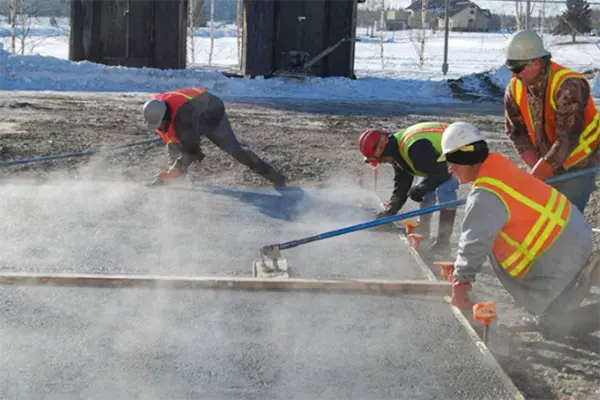The Role of Cold Weather Concrete Additives
When winter’s chill sets in and temperatures plummet, the process of pouring and maintaining concrete becomes a challenge. The freezing and thawing cycle can wreak havoc on freshly laid concrete, leading to cracks and other forms of damage. To combat these issues, contractors often turn to concrete additives specifically formulated for cold weather. In this blog post, we’ll explore what these additives are and how they work to protect concrete in low temperatures.
The Challenge of Cold Weather on Concrete
Concrete is a porous material that can absorb water. When temperatures drop below freezing, this absorbed water can turn into ice, expanding and causing the concrete to crack or even break apart. This is known as freeze-thaw damage, and it’s a significant concern in regions with cold climates.
Enter: Concrete Additives for Cold Weather
To mitigate the effects of freezing temperatures, a variety of additives can be incorporated into the concrete mix. These additives serve several purposes, including:
- Air Entrainers: These additives introduce tiny air bubbles into the concrete, which act as “shock absorbers” when the water inside them freezes. The air bubbles reduce the stress caused by the expansion of ice.
- Water-Reducing Admixtures: By reducing the amount of water needed in the mix, these admixtures help to decrease the potential for freeze-thaw damage. Less water means fewer places for ice crystals to form.
- Set-Accelerating Admixtures: These additives speed up the initial set and hardening of the concrete, allowing it to gain strength more quickly. Hardened concrete is better equipped to handle the rigors of freezing temperatures.
- Set-Retarding Admixtures: In some cases, it’s beneficial to slow the setting process, allowing workers more time to place and finish the concrete before it hardens, which can be particularly useful in cold, but not freezing temperatures.
- Antifreeze Admixtures: Contrary to the name, these additives don’t prevent freezing but rather allow the concrete to withstand freezing temperatures without damage. They work by lowering the freezing point of the water in the mix.
- High-Range Water-Reducers: These are similar to water-reducing admixtures but provide a greater reduction in water content, leading to a stronger and more durable concrete.

How to Choose the Right Additive
Selecting the appropriate concrete additive for cold weather depends on several factors, including:
- Expected Low Temperatures: The additive should be able to handle the lowest temperatures expected at the construction site.
- Concrete Placement Speed: Faster placement may require an accelerator, while slower placement might benefit from a retarder.
- Type of Concrete: Different types of concrete may respond better to certain additives.
- Curing Conditions: The curing process and the environmental conditions during curing should be considered.
Conclusion
Concrete additives for cold weather play a critical role in ensuring the integrity and longevity of concrete structures in cold climates. By understanding the different types of additives available and how they function, contractors can make informed decisions to protect their concrete investments from the damaging effects of freezing temperatures. As the weather turns cold, these additives are a contractor’s best defense against the elements, ensuring that concrete projects stand the test of time.
Post time: 4 月-23-2024




